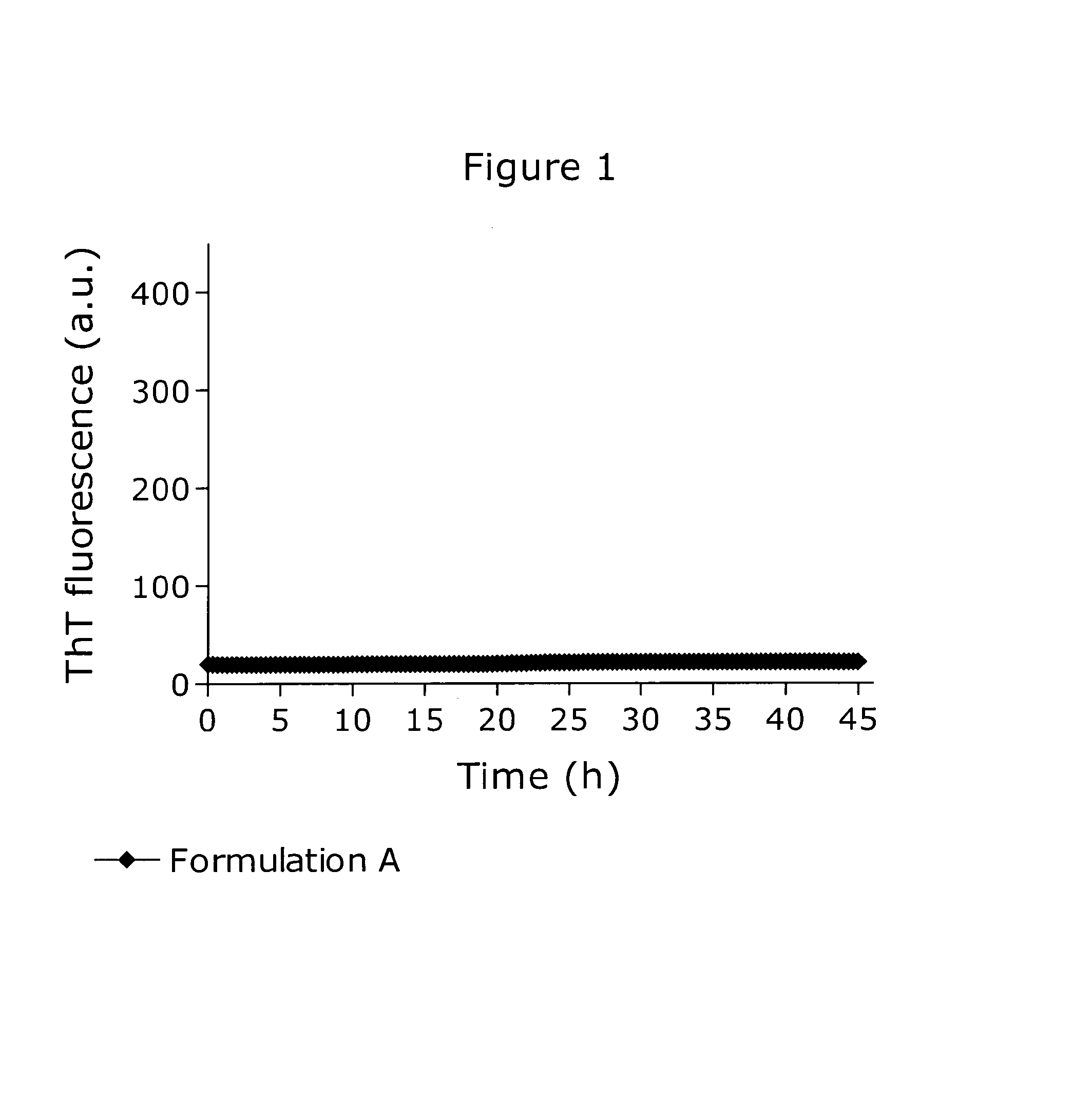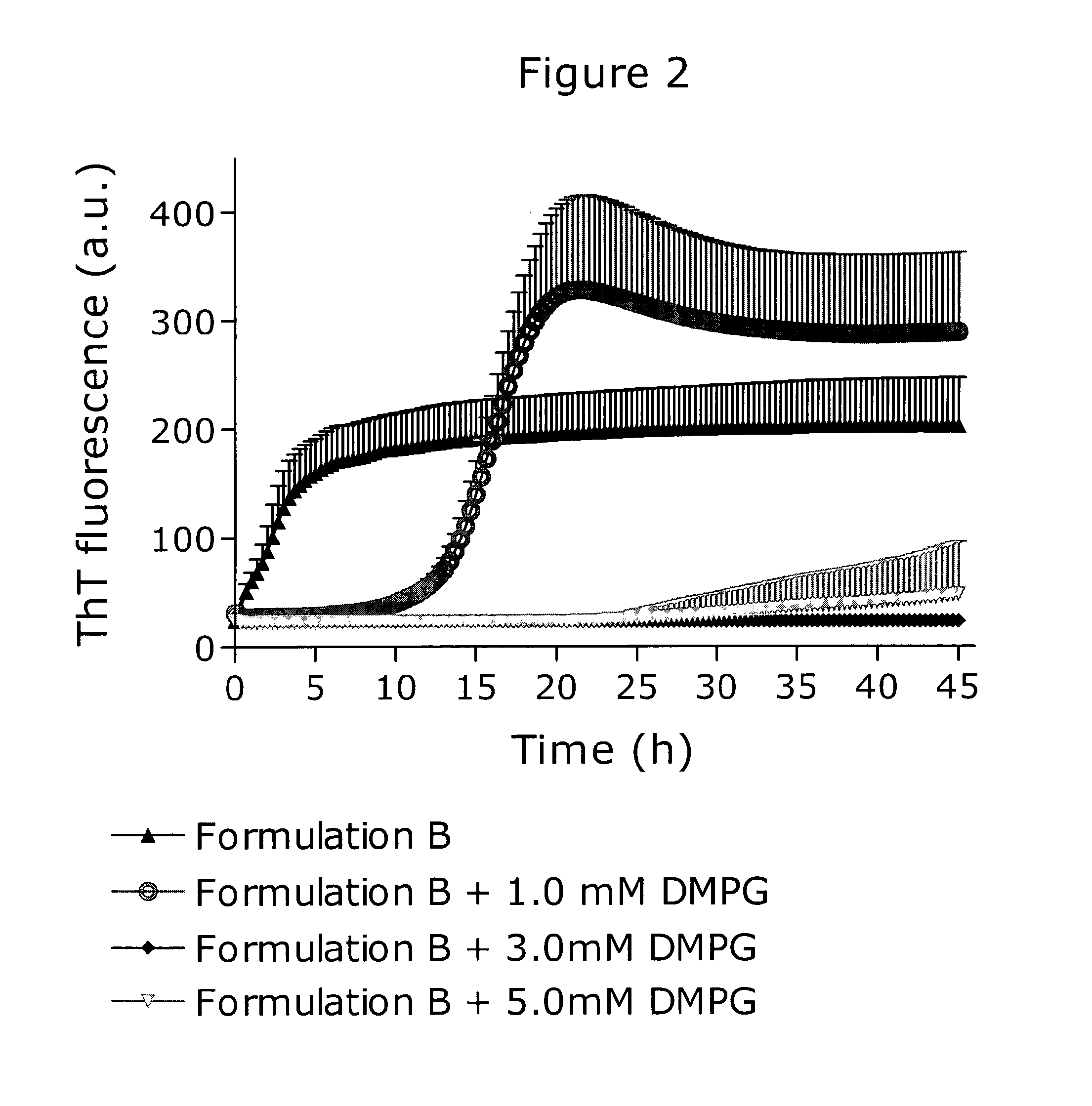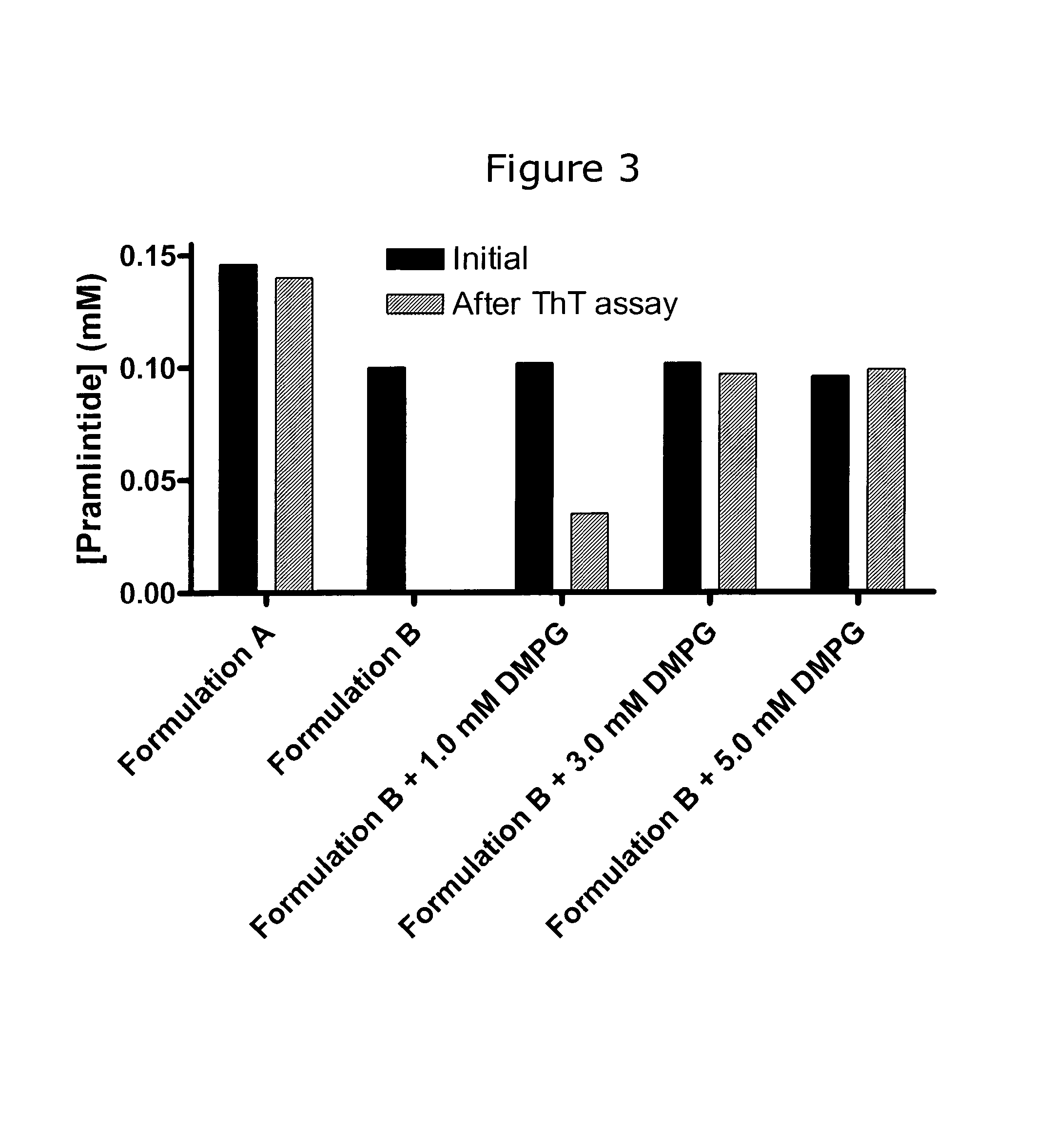Stable formulations of amylin and its analogues
a technology of amylin and its analogues, which is applied in the direction of drug compositions, peptide/protein ingredients, metabolic disorders, etc., can solve the problems of pramlintide being difficult to keep in solution, its use as a drug is troublesome, and the tendency to fibrillate ex-vivo and become ineffectiv
- Summary
- Abstract
- Description
- Claims
- Application Information
AI Technical Summary
Benefits of technology
Problems solved by technology
Method used
Image
Examples
example 1
[0163]The physical stability of a pramlintide formulation similar to the commercially available Symlin® formulation was assessed using a ThT fibrillation assay as shown in FIG. 1. Formulation A consisted of 150 μM pramlintide, 4.5 mM sodium acetate, 25.5 mM acetic acid, 236 mM mannitol, 20 mM m-cresol, adjusted to pH 4.0. Under the applied conditions the formulation was inert towards fibrillation as no ThT fluorescence signal emerged.
example 2
[0164]Formulating pramlintide at physiological pH resulted in a physically unstable formulation. This was shown using a ThT fibrillation assay as illustrated in FIG. 2. The ThT fluorescence at certain time points are shown below for the four formulations:
[0165]
5 hSD20 hSD40 hSDFormulation B159321953720343Formulation B + 1.0 mM DMPG2803228128773Formulation B + 3.0 mM DMPG240230230Formulation B + 5.0 mM DMPG2312424136
[0166]Formulation B consisted of 100 μM pramlintide, 174 mM glycerol, 30 mM phenol, 8 mM glycylglycine pH 7.4. This formulation initiated fibrillation almost instantaneously. The addition of 1.0 mM DMPG to formulation B improved the stability and fibrillation initiated after a lag time of approx. 5 hours. Increasing the DMPG concentration to 3.0 mM in formulation B resulted in a formulation inert towards fibrillation as no ThT fluorescence signal emerged during the measurement time. Formulation B with DMPG added to 5.0 mM exhibited a small ThT fluorescence after a lag tim...
example 3
[0167]The initial concentrations and concentrations of peptide after completion of the ThT fibrillation assay were measured as described above in “Measurement of initial and final concentrations”. This was done for Formulation A described in Example 1 and the four Formulation B without and with DMPG as described in Example 2. The results are shown graphically in FIG. 3 and also tabulated below:
[0168]
Initial conc.After ThT assay(mM)(mM)Formulation A0.150.14Formulation B0.100.00Formulation B + 1.0 mM DMPG0.100.04Formulation B + 3.0 mM DMPG0.100.10Formulation B + 5.0 mM DMPG0.100.10
[0169]More than 93% of the pramlintide in Formulation A was recovered after completation of the ThT assay despite the severe stress conditions applied during this assay. Hence, the lag of ThT fluorescence was consisted with a stable pramlintide formulation rather than loss of peptide by adsorption or precipitation or other means.
[0170]In Formulation B without DMPG all pramlintide was lost during the ThT assa...
PUM
| Property | Measurement | Unit |
|---|---|---|
| pH | aaaaa | aaaaa |
| concentration | aaaaa | aaaaa |
| concentration | aaaaa | aaaaa |
Abstract
Description
Claims
Application Information
 Login to View More
Login to View More - R&D
- Intellectual Property
- Life Sciences
- Materials
- Tech Scout
- Unparalleled Data Quality
- Higher Quality Content
- 60% Fewer Hallucinations
Browse by: Latest US Patents, China's latest patents, Technical Efficacy Thesaurus, Application Domain, Technology Topic, Popular Technical Reports.
© 2025 PatSnap. All rights reserved.Legal|Privacy policy|Modern Slavery Act Transparency Statement|Sitemap|About US| Contact US: help@patsnap.com



